Contents: 2024 | 2023 | 2022 | 2021 | 2020 | 2019 | 2018 | 2017 | 2016 | 2015 | 2014 | 2013 | 2012 | 2011 | 2010 | 2009 | 2008 | 2007 | 2006 | 2005 | 2004 | 2003 | 2002 | 2001
2005, 33
Ultrasonic sputtering for polishing in semiconductor industry
language: Russian
received 20.10.2005, published 07.11.2005
Download article (PDF, 350 kb, ZIP), use browser command "Save Target As..."
To read this document you need Adobe Acrobat © Reader software, which is simple to use and available at no cost. Use version 4.0 or higher. You can download software from Adobe site (http://www.adobe.com/).
ABSTRACT
In the article, authors discover the reasons, which decrease efficiency of very important process in semiconductor industry – chemical mechanical polishing (CMP). It is shown that decreasing of final product quality is caused by nonuniform distribution of polishing liquid on a surface. After analysis of different fluid supply ways it was suggested to use the fine-disperse ultrasonic sputtering of polishing liquid to polishing wheel surface. Proposed technology implements uniform sputtering of polishing liquid to polishing wheel surface and therefore it provides:
1. uniform pressure fluctuations, that effect on wafer roughness,
2. uniform distribution of chemical agent on polishing surface.
The results of studies that provide the developing of ultrasonic oscillatory system for practical realization of suggested technology and technical solutions are presented.
The oscillatory system was built as a half-wave system, based on piezoelectric transducer and concentrator with step-exponential coupling. Resonant frequency at 40 kHz was selected taking to account following requirements: liquid flow is from 0,2 to 1,2 milliliters per second, average drop diameter is 18 micrometers, that prevent a fog occurrence. For providing a maximal jet width, some studies of sputtering process from different form sputtering surfaces were carried out. Optimal form of working tool sprayer was found. The optimal working tool of oscillatory system has elliptic shape and has axisymmetricaly located additional channels. This form produces atomization jet more than 65 millimeters wide and at distance 40 millimeters from working end.
Description of electronic generator, which products ultrasound frequency AC current for supplying oscillatory system, is presented. Key features of sputtering devices are summarized in conclusion.
9 pages, 8 figures
Сitation: V. N. Khmelev, A. V. Shalunov, R. V. Barsukov, S. N. Tsyganok, A. N. Slivin. Ultrasonic sputtering for polishing in semiconductor industry. Electronic Journal “Technical Acoustics”, http://www.ejta.org, 2005, 33.
REFERENCES
1. Joseph M. Steigerwald, Shyam P. Murarka, Ronald J. Gutmann. Chemical Mechanical Planarization of Microelectronic Materials.
2. Мощные ультразвуковые поля. Под ред. Л. Д. Розенберга. М., Наука, 1968.
3. Теумин И. И. Ультразвуковые колебательные системы. М.: Машгиз, 1959, 331 с.
4. Патент РФ № 2141386. Ультразвуковая колебательная система.
5. Физические основы ультразвуковой технологии. Под ред. Л. Д. Розенберга М., Наука, 1970.
6. Harvey L. Berger. Ultrasonic Liquid Atomization. Theory and Application. P.H. Publishers, 2002, p. 169.
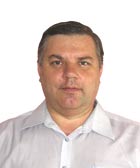 |
Khmelev Vladimir Nikolaevich — dean of information technologies and automation faculty at Biysk technological institute, professor, Ph.D (ultrasound). Area of scientific interests is application of ultrasound for an intensification of technological processes. e-mail: vnh(at)bti.secna.ru |
|
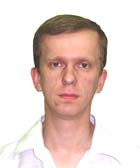 |
Shalunov Andrey Viktorovich is an engineer of acoustic processes and devices laboratory at Biysk technological institute, lecturer at the Measurement and Automation department. Graduated Biysk technological institute in 2003. Area of scientific interests is the intensification of technological processes, design of processing lines and equipment for ultrasonic technologies. |
|
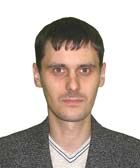 |
Barsukov Roman Vladislavovich — a leading engineer of acoustic processes and devices laboratory at Biysk technological institute. Graduated Biysk technological institute in 1998 (informatics and measuring instruments). Subject of scientific researches is sources of ultrasonic energy for an intensification of technological processes. |
|
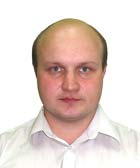 |
Tsyganok Sergey Nikolaevich — a head of acoustic processes and devices laboratory at Biysk technological institute. Graduated Biysk technological institute in 1998 (informatics and measuring instruments). Area of scientific interests is development and designing of piezoelectric ultrasonic systems. |
|
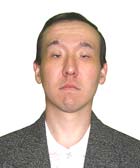 |
Slivin Alexey Nikolaevich — engineer of acoustic processes and devices laboratory at Biysk technological institute, lecturer at the Measurement and Automation department. Graduated Biysk technological institute in 1999 (informatics and measuring instruments). Area of scientific interests is application of ultrasonic oscillations for processes of welding of thermoplastic polymeric materials. |
|
